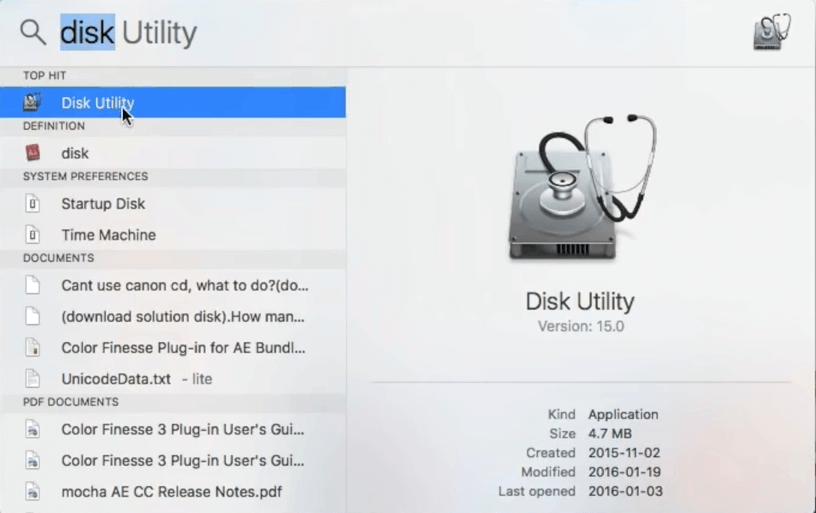- To repair a disk from the command line, type or paste the following command into terminal: diskutil repairvolume /Volumes/ drive identifier/ and press Return. Just as before, I’ll use SD as my drive identifier. If you wish to target a different drive, insert the name of that drive instead of SD.
- The mac in question is a 10.4 (latest update) and it refused to mount following a forced shut down due to the loading icon lasting forever to move a file, and since, it can't mount. Disk warrior was at work all last night and didn't budge on the progression bar, and just trying it again and it seems that it's stuck.
- The reason why I am asking is because I usually eject my HD by dragging it to the trash icon. Even though I did it, my Mac claims that it wasn't eject properly. Then when I plugged it back in, then I get, 'Error: Disk Utility can't repair this disk.Back up as many of your files as possible, reformat the disk.
The start-up disk: Disk Utility can’t verify or repair the start-up disk — that’s Mac talk for the boot drive that contains the Mac OS X system that you’re using at the moment — which makes sense if you think about it because that drive is currently being used!
Disk Utility User Guide
Disk Utility can check for and fix errors related to the formatting and directory structure of a Mac storage device.
Disk Utility can fix certain disk problems—for example, multiple apps quit unexpectedly, a file is corrupted, an external device doesn’t work properly, or your computer won’t start up. Disk Utility can’t detect or repair all problems that a disk may have.
To check and repair a disk, you need to run First Aid on each volume and container on the storage device in turn, then run it on the storage device itself.

If Disk Utility tells you the disk is about to fail, back up your data and replace the disk—you can’t repair it.
Mac Os X Can't Repair The Disk Flash Drive Mp4
:max_bytes(150000):strip_icc()/005_use-disk-utility-to-clone-macs-drive-4042367-5bc4e77946e0fb002698ce0b.jpg)
In the Disk Utility app on your Mac, choose View > Show All Devices.
If Disk Utility isn’t open, click the Launchpad icon in the Dock, type Disk Utility in the Search field, then click the Disk Utility icon .
Note: If you’re checking your startup disk or startup volume, restart your computer in macOS Recovery, select Disk Utility in the macOS Recovery window, then click Continue. If you check your startup volume (Macintosh HD), make sure you also check your data volume (Macintosh HD - Data).
In the sidebar, select a volume, then click the First Aid button .
In the First Aid dialog, click Run, then follow the onscreen instructions.
When the First Aid process is complete, click Done.
Repeat steps 2 through 4 for each volume on the storage device.
In the sidebar, select a container, then click the First Aid button .
In the First Aid dialog, click Run, then follow the onscreen instructions.
When the First Aid process is complete, click Done.
Repeat steps 6 through 8 for each container on the storage device.
In the sidebar, select the storage device, then click the First Aid button .
In the First Aid dialog, click Run, then follow the onscreen instructions.
When the First Aid process is complete, click Done.
If Disk Utility reports that the disk appears to be OK or has been repaired, you’re done. You can click Show Details to see more information about the repairs. Otherwise, you may need to do one of the following.
If Disk Utility reports “overlapped extent allocation” errors, two or more files occupy the same space on your disk, and at least one of them is likely to be corrupted. You need to check each file in the list of affected files. Most of the files in the list have aliases in a DamagedFiles folder at the top level of your disk.
If you can replace a file or re-create it, delete it.
If it contains information you need, open it and examine its data to make sure it hasn’t been corrupted.
If Disk Utility can’t repair your disk, or you receive a report that the First Aid process failed, try to repair the disk or partition again. If that doesn’t work, back up as much of your data as possible, reformat the disk, reinstall macOS, then restore your backed-up data.
Mac Os X Can't Repair The Disk Flash Drives
If your Mac has a Fusion Drive and you see a flashing question mark or alert, see the troubleshooting section of the Apple Support article About Fusion Drive, a storage option for some Mac computers.
If you continue to have problems with your disk or it can’t be repaired, it may be physically damaged and need to be replaced. For information about servicing your Mac, see Find out how to service or repair your Mac.
